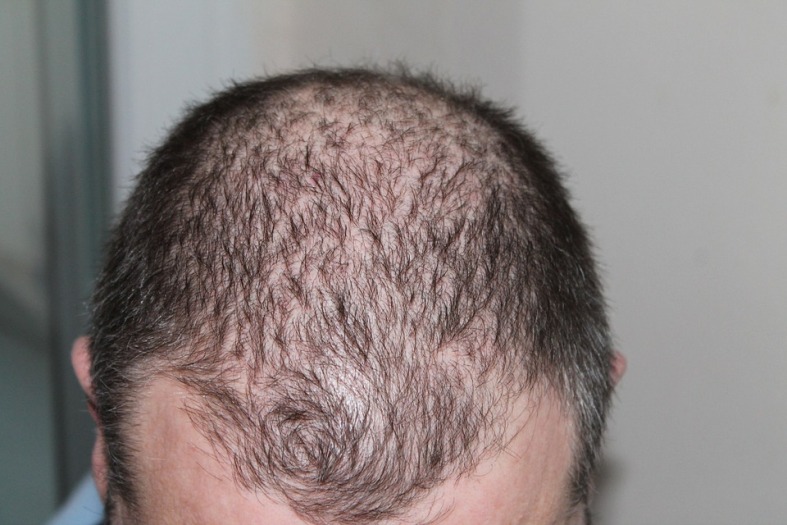
The human body undergoes some annoying reversals during the aging process. Where you once had a luxurious head of hair, you suddenly find yourself with shiny spots of scalp, while hair insists on appearing in places it has no business growing. Men find themselves sprouting from their ears and noses while women are amazed to find whiskers growing out of their chins. For some, the solution is vigilant tweezing, but as eyesight begins to fade, sometimes professional help is in order.
Chelsea Carmichael, the lead medical aesthetician at Dorset Street Dermatology in South Burlington, said inappropriate hair growth comes from hormonal changes. Everyone is born with a certain amount of hair follicles. You don’t produce more as you age, but the type of hair that grows may change over time from vellus hairs — which are the equivalent of peach fuzz — to terminal hairs, which are darker and coarser.
Laser Therapy
If you are looking for help in removing unwanted hair, you have two main options: laser treatment or electrolysis. Carmichael is a proponent of laser therapy, which uses light energy to target the pigment at the follicle to destroy the follicle. Unlike electrolysis, which targets one follicle at a time, laser treatment can cover a larger area. Hair can come back, albeit in a lighter form, so multiple treatments are generally required. Carmichael explained that hair growth occurs in three stages: anagen, catagen and telogen. The anagen phase is the growth phase, catagen is transitional, and telogen is a period of dormancy, after which the anagen phase starts up again. Because of these different phases, Carmichael recommends patients set up a cycle of six treatments, four weeks apart. “You don’t know where hair is in the growth cycle until you pull it out,” she said.
Carmichael said there is virtually no pain to laser treatment. “It’s like a rubber band snapping on your skin,” she said. “There is only mild discomfort.”
The U.S. Food and Drug Administration (FDA) cautions that side effects of laser hair removal can include blistering, discoloration after treatment, swelling, redness and scarring. It recommends that sunlight be avoided during the healing process. Carmichael explained that the sunlight prohibition is due to the fact that the laser reads pigment, and sun will darken skin and lighten hairs, lessening the contrast between the two. However, she noted that there are different kinds of laser treatments, with some more suitable for those with melanin-rich skin like African-Americans. Since those individuals have less contrast between skin and hair color, they may need more treatments. Carmichael added that although one shouldn’t tweeze, wax or bleach hair during treatments, one can resume normal activity including wearing make-up. The procedure itself takes seconds, but appointments are generally for fifteen minute intervals unless there is a large area to be covered.
Electrolysis
Leslie Cody of the Burlington Studio of Electrolysis in Essex Junction explained that electrolysis, in contrast to laser removal, is permanent, a fact confirmed by the FDA. She believes another advantage to electrolysis is that there is no limit on hair or skin color, although different forms of electrolysis may be used for different complexions.
Electrolysis appointments are generally in the 15 minute to half hour range, although they can be longer for larger surfaces. Like laser treatment, multiple appointments are required because of the three phases of hair growth. “It’s very addicting,” said Cody “because you see the results and the smooth, clear skin.”
The thicker the hair, the more treatments are required until the hair becomes lighter and lighter and finally gone. Cody said patients will feel an irritating heat sensation that subsides within an hour.
Hair Replacement
Of course, for some, the problem isn’t excess hair, but lack thereof. Women, as well as men, can be subject to thinning hair. Agnes Perellie of HairBuilders said there are three ways to combat genetic hair loss (which is almost always inherited from the maternal side of the family): surgical; topical; and cosmetic.
Surgical hair replacement is done in a doctor’s office on referral from Perellie. It involves transplanting hair from the back of the head to the top of the head and requires between one and four sessions, depending on the amount of hair loss. Patients are given local anesthesia, but remain awake and alert during the procedure, which essentially involves the harvesting of hair follicles. Staples, which are required to complete the procedure, are removed after ten days. After the transplant, the hair falls out because the follicles have been traumatized and for six to eight weeks the hair is in a period of dormancy before it begins to grow. There is some scabbing after surgery, but that goes away after 10 to 14 days. Perellie said transplant patients shouldn’t perform any heavy lifting during that period or take part in any vigorous sports.
Topical solutions are those which can be ingested or rubbed on. Perellie said the downside to those products is they only work for as long as you are using them. The products limit the speed of hair loss progression and regenerate some new hair, but they are not permanent solutions. Also in this category are forms of laser therapy and certain kinds of shampoos and conditioners which contain a compound called Dihydrotestosterone or DHT.
The last option – cosmetic – is one which Perellie and her staff perform at their offices in Williston and involves augmentation, integration and replication of hair. Perellie takes a mold of a client’s head and some hair samples from which she can create hair that is indistinguishable from the client’s own hair. The initial appointment, which can also include a haircut and coloring, takes two hours, but subsequent appointments are generally only an hour. Women come in for additional treatments between one and four times a year, but men often have to come in more often because, as Perellie stated “they are harder on their hair.”
There are no restrictions on activities after cosmetic treatment, but clients are advised to only use shampoos and conditioners with a particular pH balance.
So there you have it. Whether your problem is too much or too little, you don’t have to face the mirror and wince. Help is just a phone call away.
This article was contributed by Phyl Newbeck.
 Related Articles & Free Subscription
Related Articles & Free Subscription
Hearing Tests Can Miss a Common Form of Hearing Loss
How to Choose and Use a Home Blood Pressure Monitor






Comment here